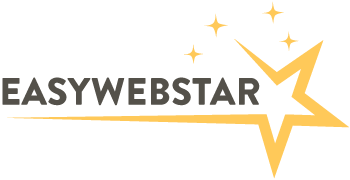Key Takeaways:
- Prioritize components that offer the best performance-to-cost ratio, ensuring your money goes toward the parts that deliver the most noticeable benefits in gaming performance.
- Be open to purchasing used or refurbished parts, as doing so can unlock significant savings while still delivering reliable results—just be sure to buy from reputable sources and test hardware when possible.
- Strategically plan your build so you can easily upgrade over time by selecting a case, power supply, and motherboard that support the inevitable advances in gaming hardware.
Building a gaming desktop on a budget doesn’t mean compromising performance. With the right approach, you can prioritize essential components like the CPU, GPU, and memory to get smooth gameplay without overspending. Identifying what games you plan to run, your preferred settings, and any multitasking needs is essential to balance performance and affordability. Avoid unnecessary extras at the start—focus on upgradeable components to future-proof your build while sticking to your budget.
Comparing prebuilt systems can help determine realistic benchmarks and pricing expectations when researching options. For instance, Syber’s benchmarked affordable gaming desktops offer insight into how specific hardware configurations perform in real-world scenarios. These references can guide new builders in selecting components that deliver solid performance for their price. Whether assembling a PC from scratch or buying a budget-friendly system to modify later, careful planning and awareness of market options are key to maximizing value and gaming potential.
CPU & GPU Selection
The heart of any gaming desktop lies in its CPU and GPU, as these parts together set the baseline for your performance. These components are also often the most expensive, so they deserve careful consideration. Games demand increasing levels of multitasking, with many titles taking advantage of additional CPU cores while relying on the GPU for fluid graphics and high frame rates. Prices on these parts can change rapidly, so always compare the latest options and look out for flash deals or generation-end clearances.
Choosing Your Processor (CPU)
One of the most compelling options for value-focused builders is the Intel Core i5-13400F, which consistently garners praise for blending affordability with multi-core prowess. It’s perfectly suited to gamers who expect to play new releases, stream content, or multitask without experiencing performance dips. If you’re pinching pennies, don’t overlook previous-generation CPUs such as older Intel Core i5s or the AMD Ryzen 5 series, both of which can be found at excellent prices during sales or in the used market. Whichever chip you select, ensure your choices remain compatible with your desired motherboard, and don’t forget to consider BIOS update requirements to save future headaches.
Picking A Graphics Card (GPU)
The graphics card is perhaps the single most important part for gaming visuals and frame rates. For those sticking to a 1080p resolution (the sweet spot for budget and mainstream PCs), the AMD Radeon RX 7600 presents outstanding value. It enables high and even ultra settings in contemporary games, making it hard to beat for the price. NVIDIA fans should watch RTX 3050, a card that offers solid ray tracing and DLSS support if found at a discount, especially in secondhand listings.
Memory & Storage
Once you’ve secured your core performance parts, it’s time to think about keeping your gameplay smooth and your load times snappy. Memory and storage may seem less glamorous than CPUs and GPUs, but selecting the right options improves the overall experience. It can save you from annoying disruptions or future upgrades.
- RAM: Currently, 16GB of DDR4 RAM is the sweet spot for gaming, providing enough capacity for smooth gameplay, future-proofing for upcoming releases, and plenty of room for background browser tabs, chat apps, or streaming tools. If your motherboard supports dual-channel configurations, opt for two matched 8GB sticks to maximize memory bandwidth and eliminate bottlenecks.
- Storage: Consider a 1TB NVMe SSD as your primary storage drive. These drives dramatically reduce both boot and game load times compared to traditional hard drives or even older SATA SSDs, and they now cost only a modest premium. With 1TB, you’ll have the flexibility for a healthy game library, essential productivity apps, and your favorite media, making “storage anxiety” a thing of the past.
Motherboard & Power Supply
Beyond performance, reliability and expandability are paramount, and both the motherboard and power supply play vital roles in ensuring your build remains trouble-free for years to come. Choose wisely here and you’ll avoid frustrating limitations or unexpected failures.
Motherboard Selection
A motherboard like the ASRock B660M Pro RS hits an ideal balance of price, modern features, and upgrade flexibility. This board supports Intel’s latest chips out of the box, offers multiple high-speed M.2 slots for ultra-fast SSDs, and sufficient RAM slots for expansion down the line. When researching alternatives, always select reputable brands, check for up-to-date BIOS versions that support your chosen CPU, and ensure a robust set of I/O to eliminate headaches when adding peripherals.
Choosing A Power Supply
Don’t be tempted to save a few extra dollars on the power supply. An unstable unit risks catastrophic damage to every carefully chosen component. Aim for a 600W 80+ Gold-certified PSU; this wattage provides peace of mind and headroom for future GPU upgrades, while Gold certification ensures better efficiency and less wasted electricity and heat. Well-rated brands with comprehensive warranties are always your safest bet.
Case & Cooling
An often underappreciated aspect of PC building is case and cooling selection. Yet, a well-chosen case makes the assembly process smoother and ensures all components are adequately cooled, keeping fan noise down and stability high even during marathon gaming sessions.
- Case: The Zalman i3 NEO ATX Mid Tower is a stylish pick with great airflow thanks to mesh panels and plenty of room for cable management. If you prefer a unique look or certain form factors, cases from NZXT, Cooler Master, and Corsair at this price tier also offer solid options. Prioritize a layout that lets cool air reach your CPU and GPU without obstruction and allows for simple upgrades or expansions.
- Cooling: Most modern budget CPUs like the Intel i5-13400F or Ryzen 5 come with efficient stock coolers. These are adequate for keeping temperatures within safe limits at stock speeds. If you decide to overclock or simply want extra assurance and quieter operation, invest in a reputable air cooler from Arctic or Cooler Master, which can make a noticeable difference.
Tips For Saving Money
Stretching your dollars further isn’t just about buying cheaper components—it’s about buying smart. Here’s how you can squeeze every ounce of value out of your budget:
Buy Used Or Refurbished Components
Consider shopping reputable marketplaces such as eBay, Reddit’s hardware swap, or local platforms. These sources often turn up gently used CPUs, graphics cards, and other essentials at substantial discounts. If you’re new to buying used electronics, prioritize sellers who provide proof of working condition, allow in-person testing, or offer return policies. Always closely inspect graphics cards and memory for physical damage, and when possible, ask for recent benchmarks or system screenshots to confirm real-world performance.
Take Advantage Of Sales & Bundles
Be strategic about your timing—major sales events such as Amazon Prime Day, Black Friday, and back-to-school promotions can slash prices dramatically on key components. Use browser extensions or dedicated price-tracking websites to set alerts for the parts you need. Bundled deals, where CPUs and motherboards are sold together for less than their combined individual prices, can make high-quality parts more accessible. Check manufacturer and retailer sites regularly to stack discounts and maximize your haul.
Build With Upgrades In Mind
Future-proofing doesn’t have to be expensive—choose components with versatility in mind. Select a case that isn’t cramped and includes additional drive bays for later storage expansion. Opt for a power supply slightly above your current requirements so a next-gen GPU swap won’t demand a replacement. Choose a motherboard with sufficient RAM slots and modern connection options so you aren’t locked out of new features. This approach allows you to evolve your machine as your needs and ambitions change, rather than feeling forced to replace everything all at once.
Conclusion
By combining these money-saving strategies with sound component choices, you’ll be able to assemble a gaming desktop that keeps up with the latest titles, maintains high frame rates, and remains ready for upgrades whenever the next game-changing technology emerges—all without draining your bank account. In fact, the savings you unlock may even leave room for high-quality peripherals or a few extra games to christen your new system.
















